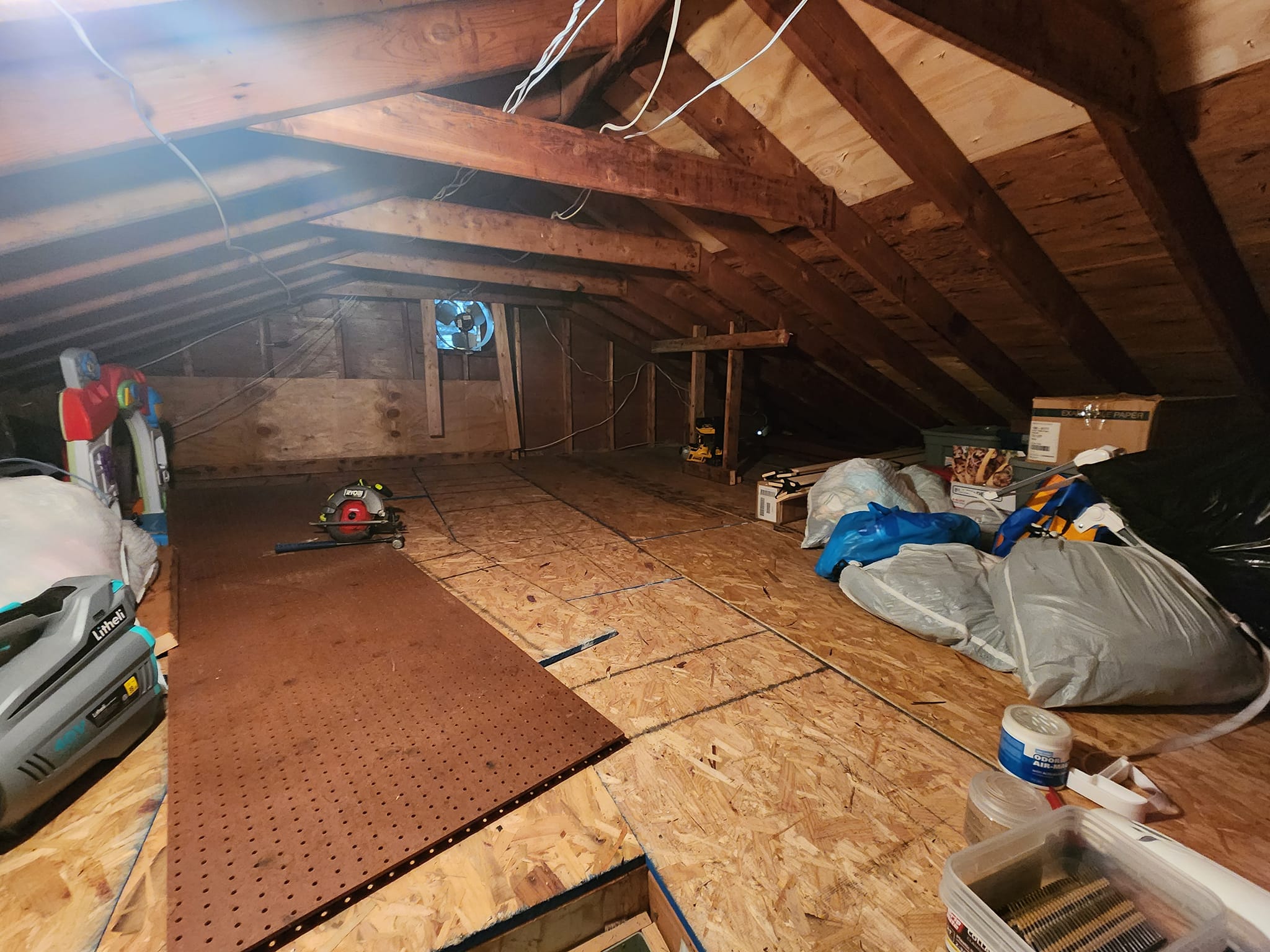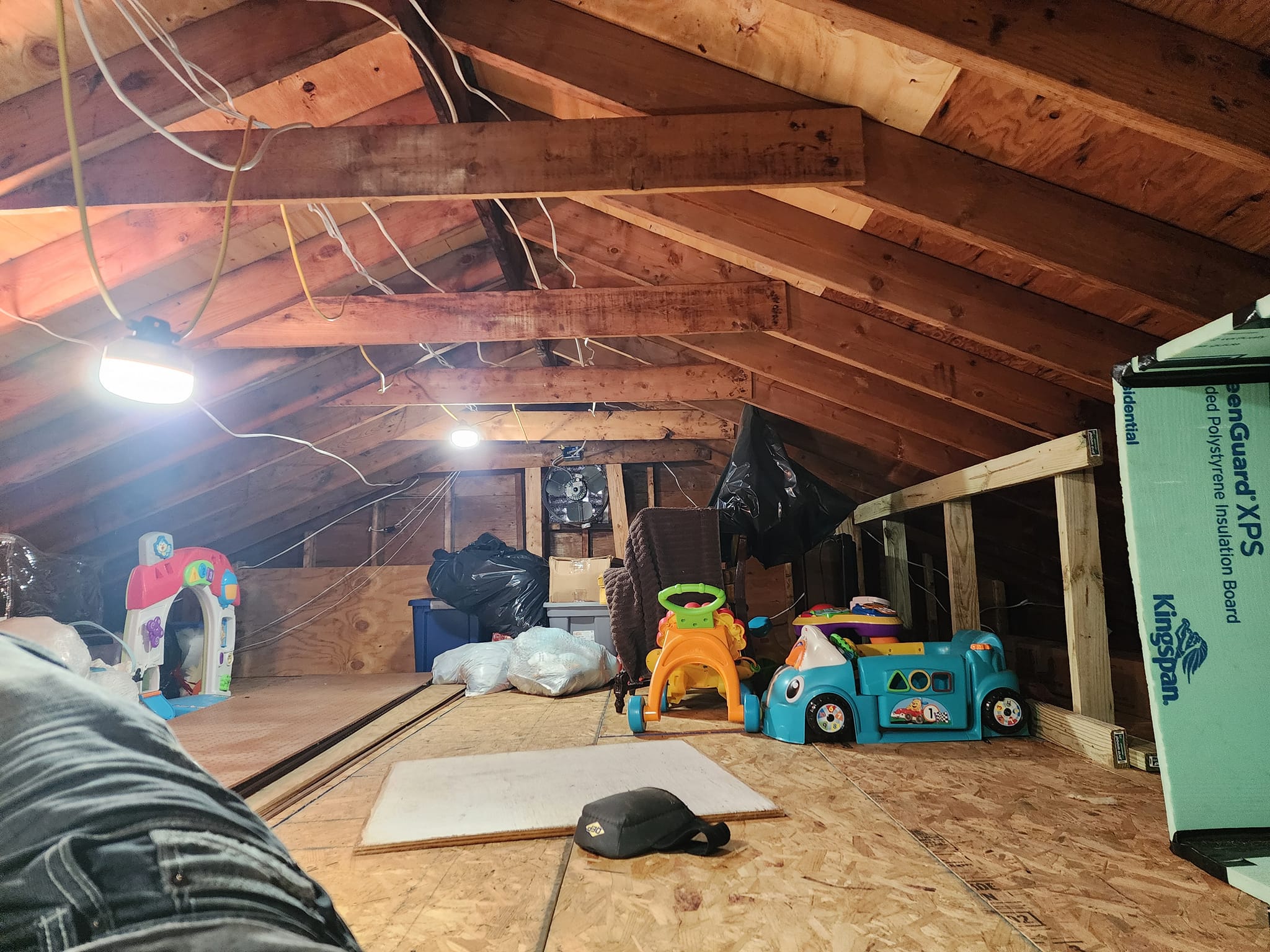Is laying linoleum flooring over the almost finished sheeted attic floor a good way to seal it and prevent moisture, despite its cheapness?
8 months ago
Last Updated: October 14, 2024
I’m almost finished putting sheets on my attic floor. I was considering laying linoleum flooring on top of it, not for aesthetics but because it’s affordable and I want to seal the floor. Do you think this is a good idea, or will it end up trapping moisture underneath?


Was insulation installed under the floor? And was a vapor barrier used?
Opted for no vapour barrier, only insulation, with plywood on top
Probably should’ve put in a vapour barrier first, followed by insulation, and then plywood
Mark, it was already insulated. I just used plywood. Do you recommend anything to cover it or should I just tape the seams and apply a clear coat of drylok?
Joey, you really don’t need to include a vapor barrier
Linoleum is perfectly fine. I don’t see any issue with using it for your project.
Expresses gratitude
Linoleum is fine, until it rips. There are snap together vinyl flooring options that are extremely easy to install.
Megan Jones hey, I’m trying not to spend a lot, just need some storage, nothing too extravagant
Suggests not putting any flooring down if it’s just for storage.
Is thinking of putting a clear coat on the floor to avoid being on bare wood when moving around up there.
It’s too late now, but using tongue and groove would have been a good idea. If you’re laying vinyl, it’s a good idea to do lauan first. The most cost-effective option would probably be to use thick paint.
Maybe using leftover carpet would be a better option. You can find affordable indoor/outdoor carpet at Home Depot.
Have you considered peel and stick carpet squares? Lowes and Home Depot have them. They are designed for indoor and outdoor use. Would that be a suitable option?
That sounds like a good idea.
Most OSB panels come with one side sealed, which is typically installed facing downwards to prevent slipping. However, if it is installed with the sealed side facing up, it creates a perfect surface for peel-and-stick vinyl tiles.
Oh yeah, the good old OSB. The Stamp is also a bit slippery, so make sure to have it facing down for our buddy the insphincter. And those chemically treated splinters from that sheet can really hurt.
The smooth side is actually more moisture resistant, which is why it faces up to divert moisture away from the inside of the house. Also, it’s a 4ft attic so you can’t walk up there anyway
The smooth side should be facing up, right? That’s not how it’s done on any job I’ve been on. If it is, then they must have been wearing track shoes to work on that house.
Mentioned it. No water problem, no slipping, no code violation in this case.
Exactly. It’s not a violation to have the shiny side facing up. However, it’s recommended to have it facing down. Once, while working with a friend on roof cleanup before strapping and inspecting, we noticed that the workers had mistakenly placed a few sheets with the shiny side up above the starter board. As we were talking, my friend accidentally stepped on one of those sheets and ended up sliding down the roof! Luckily, he fell into a pile of sand left by the masons. So, that’s my little adventure.
Greg – Yep, I agree, but that was a rooftop. This is an attic and he’s planning to cover it with vinyl. Vinyl will adhere better to the smooth side rather than the rough.
I knew that ! I was just checking your knowledge.
The attic is experiencing excessive heat. The tiles will simply come off. I would recommend considering just painting it.
You’re right, it’s a smart move to construct a knee wall.
Yeah, I agree with you Kcuf Nedib, I’m leaning towards just applying a thick layer of drylock.
Hey Joey, sometimes it’s best to just let things be, area rugs can come in handy if you need to move around comfortably.
You don’t have to seal it. Without knowing your location, it’s hard to determine your insulation needs based on climate. For cold seasonal climates, a vapor barrier on the warm side of insulation is recommended. Make sure to check the load factors of your ceiling joists to see if they can support the weight of the plywood, flooring, and items stored in the attic. It’s best to only use the space for storage and not as a living area until you confirm its capabilities. Review your homeowner’s insurance policy as well, as it may have restrictions on using the space for anything other than storage.
I wouldn’t recommend linoleum flooring unless your floor is completely flat and free of seams, as it will highlight every imperfection underneath. A more cost-effective option would be laminate flooring for a better result.
I don’t really mind how it looks, I just don’t want splinters in my butt when moving around up there. It’s only 4 feet tall, just for some small storage
I don’t think you need a vapor barrier under the osb, but it really depends on where you’re located, the humidity levels, attic ventilation (1/150 are min), etc… I try to avoid osb when I can, but just be mindful of any moisture issues like a bathroom fan venting into the attic space or inadequate ventilation. Linoleum should work well. There are ‘plank’ vinyl flooring systems (like trafficmaster brand) that are cost-effective, high quality, and don’t require glue or luan. Plus, they’re floating floors so no need to struggle with a roll of vinyl in the attic.
‘s attic has good ventilation with a bathroom vent that goes to the roof, soffit vent, ridge vent, and exhaust fans. But I’m considering just using clear drylock to create a seamless finish for easier movement up there.
It’s a good idea to have a vapor barrier between the interior ceiling and insulation in the attic, so I wouldn’t suggest adding one. I’m just curious if your current ceiling/truss system is ready for flooring.
Is all set to lay something down or put a clear coat on the floor for support when moving around up there, to avoid splinters.
I have a similar attic and I recently added a large area rug that I had lying around. It’s mainly for storage, so putting a rug down seemed like the simplest option.
Thank you! I think I might get some runners or something.
You should be okay with the linoleum, but my main worry is the adhesive and its temperature limits. Make sure to check the instructions on the glue container to ensure it can withstand extreme temperatures. However, as others have mentioned, old rugs would be a great choice. They’re inexpensive, provide some extra insulation, and add a bohemian touch to the space.
Yeah, I heard that the rug might shift in that direction
While you’re at it, getting a smoke alarm would be a smart idea.
Mentioned there is one wired in
Is doing great!